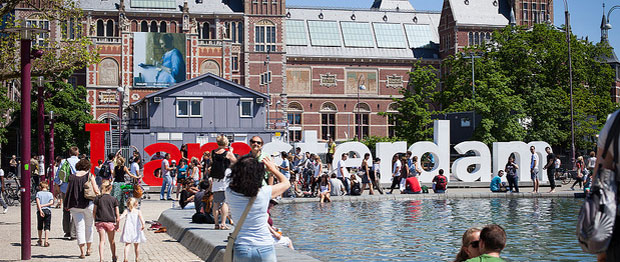How to create a travel binder for Europe

When planning a trip to Europe, it’s easy to rely on web-based resources for planning, booking and organizing our travels. A travel binder can come in handy for those times when you don’t have access to your electronics or the internet.
Travel binders are a great way to organise your information as they allow you to easily add pages. You also have the flexibility to add dividers and pockets to hold flyers or maps. How you decorate the binder and the dividers is up to you.
Here are the key sections we recommend when creating a travel binder for your next trip to Europe:
Contact information
The contact section holds key contact information for everyone in your group including cell phone numbers in case you need to reach anyone in transit.
It’s also a great idea to have a person who isn’t travelling with you act as a point of contact in case you get separated or need to pass along messages in case of emergency.
Travel itineraries
The itinerary section holds full flight information for everyone in the group including connecting flights. Include a sealable pouch in this section for baggage claim tickets.
Any other travel arrangements such as train tickets or rental car confirmation can also be included in this section.
Ground transportation bookings
The transportation section includes any shuttles from the airport or other arrangements you have pre-booked. Even if you haven’t pre-paid, this is a good place to include transportation options from the airport to your hotel (taxi, shuttle, public transportation).
If you’re planning on taking public transportation often during your stay, see if there are options that will save you money over the single ride tickets (such as the Paris Visite tourist pass).
Lodging confirmations
The lodging confirmation section includes all confirmations, addresses and contact information for places you will be staying. If you pre-paid for anything, have the receipts. Be sure to include the rate you agreed to in the local currency.
If you have made any special arrangements such as rollaway beds be sure you have those confirmations as well.
Tour Confirmations
The tour section holds information about plans booked in advance—confirmation numbers, receipts, meeting times and places.
This is also a great place to keep information about any attractions like museums, special events or happenings. Particularly in Europe, small museums can have irregular hours, so having this information easily accessible means you won’t miss out.
Maps
Add a folder for maps to your travel binder, and you will always have a map accessible.
Rather than carrying around a large book of maps, try to find small pocket maps that you can easily tuck away. Nothing marks you as a tourist faster than unfolding a large paper map on a street corner. Having several small laminated maps will make you less conspicuous, and they will hold up better in bad weather.
If you will be driving this is also a great place to keep backup directions and maps in case your car doesn’t have GPS.
Emergency information
The emergency information tab contains all the information you hope you won’t need. If you do need this information, you’ll be glad to have it all close at hand. It’s best to have one sheet for each person with:
- Name and date of birth
- Emergency contact information
- Medical information including allergies, medications, and doctor contact information
- Medical and travel insurance information
- Copy of passport
Finally, keep a sheet with the address and phone number of the New Zealand Embassy for every country you’ll be visiting.
Binder to scrapbook
You can easily turn your travel binder into the beginnings of a scrapbook of your trip. Add a few extra folders and pouches to keep track of small items you pick up along the way. Add blank pages for a travel journal. When you get home, you’ll find it easier to add your photos and create a book to remember your trip.
As you’re putting your travel binder together for your next trip to Europe, get a quote on Cover-More Travel Insurance and include your policy numbers and emergency assistance numbers in your emergency information section.
Image courtesy of Flickr user Christian Lendl; cropped from original